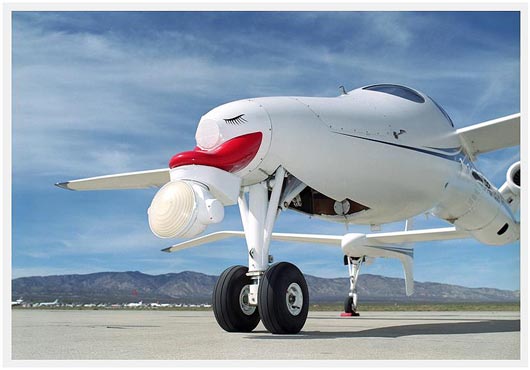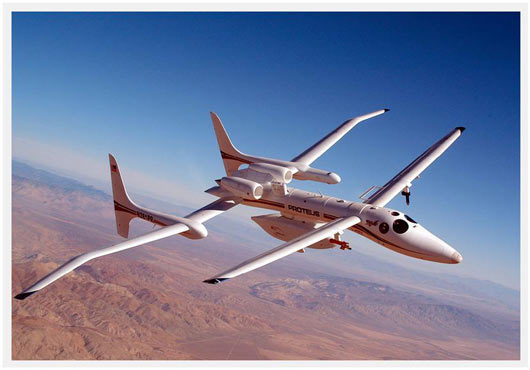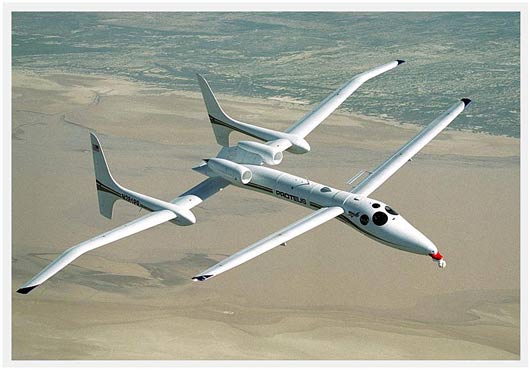CoolPix - Misc: Scaled Composites Proteus 2Fer
 Saturday, April 10, 2010 at 06:27PM
Saturday, April 10, 2010 at 06:27PM The Rutan designed and Scaled Composites built Proteus is hard to categorize in the world of CoolPix, so it’s the first airplane to be put into the ‘Misc’ slot. And, this is a special posting with 2 hi-res pix, plus one extra detail pic… all for the same low price : )
It would be easy to think those two top pix are almost identical, and they pretty much are from a perspective standpoint, but the airplane is showing some significant operational differences here. First let me say, before today, I really didn’t know much more about Proteus than: it’s very unusual looking and I’ve always liked the way it looks. I really didn’t know that it was designed to operate at such high altitudes, as in 60,000+. That’s a lot more relevant to me now that I’ve watched the awesome James May video of his U-2 ride, and the podcast interview I did recently with U-2 pilot Col. Lars Hoffman.
Proteus first flew in 1998, and had been originally designed to be a high altitude platform for carrying a large telecommunications antennae. In addition to the high altitude capabilities, Proteus is able to remain operational for 14 to 18 hours at a time. This would have made it very well suited to the airborne antennae idea, however, that venture was cancelled at some point after initial tests had been conducted. This freed the airplane up to be used in all kinds of interesting ways.
The top pic shows the airplane in 2002 with a pod mounted on the center pylon that was used in the Department of Energy's Atmospheric Radiation Measurement program. The program used Proteus and other aircraft to study the clouds from high altitudes, and also explored the use of Unmanned Aerial Vehicles (UAVs) for this work. Proteus also has the ability to be flown in an unmanned configuration (I sure didn’t know that!), tho it’s unclear to me if it was used that way on this particular program.
The second pic shows the airplane in 2003 with nothing mounted on the pylon, but attached to the nose is a special radar that was used to test the ability of UAVs to be operated in congested airspace by using an active, detect/see/avoid system. The airplane was remotely flown (tho a crew was on board to handle takeoff and landing) and other aircraft, without identifying transponders, were flown toward the airplane to test the system’s ability to provide the data needed to avoid a collision.
The pic below shows the radar installation up close which gives a good look at a humorous side of the project… part of the radar system looks like a tongue, so it’s painted red! Even better, there’s a closed eye with lashes on the left side, and as this Proteus pic from LIFE.com shows, an open eye is painted on the right side. I'm does like!
 Did you know that sometimes Proteus sticks out its tongue?!
Did you know that sometimes Proteus sticks out its tongue?!
 Martt |
Martt |  Post a Comment |
Post a Comment | 















































































Reader Comments